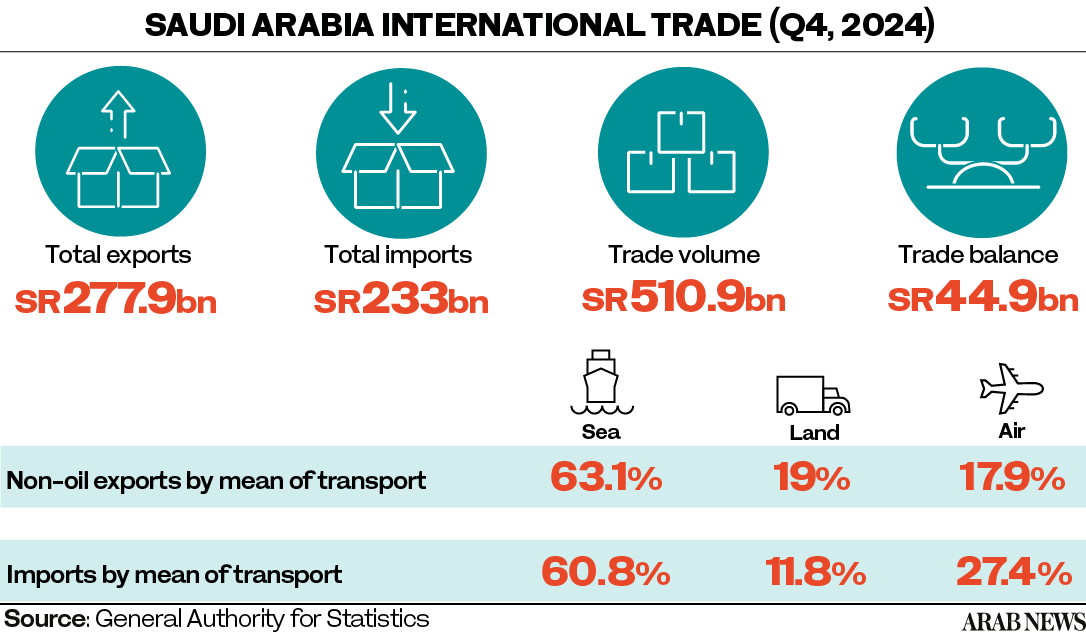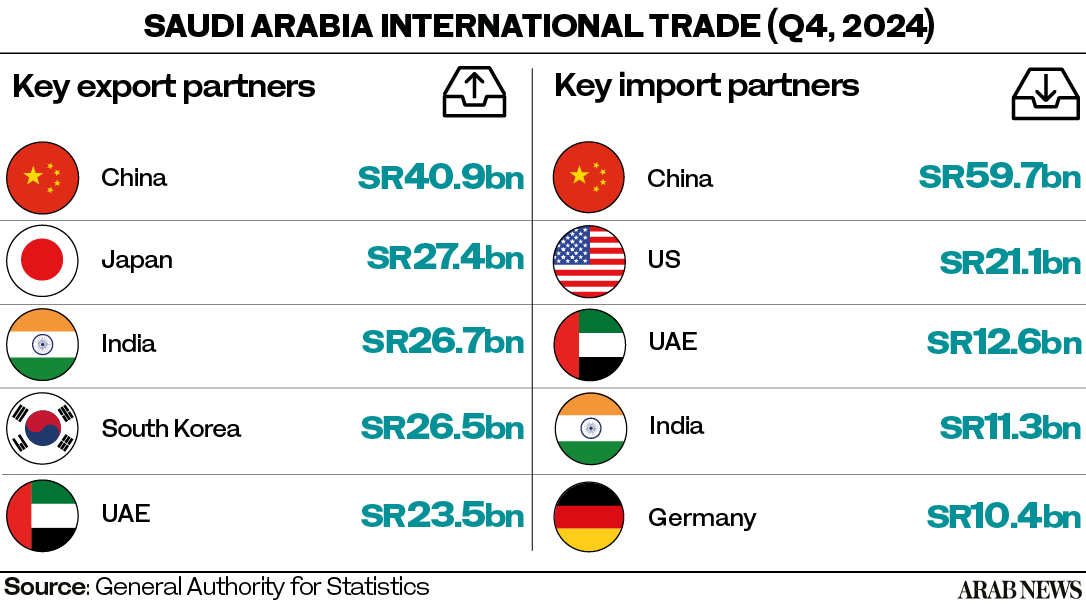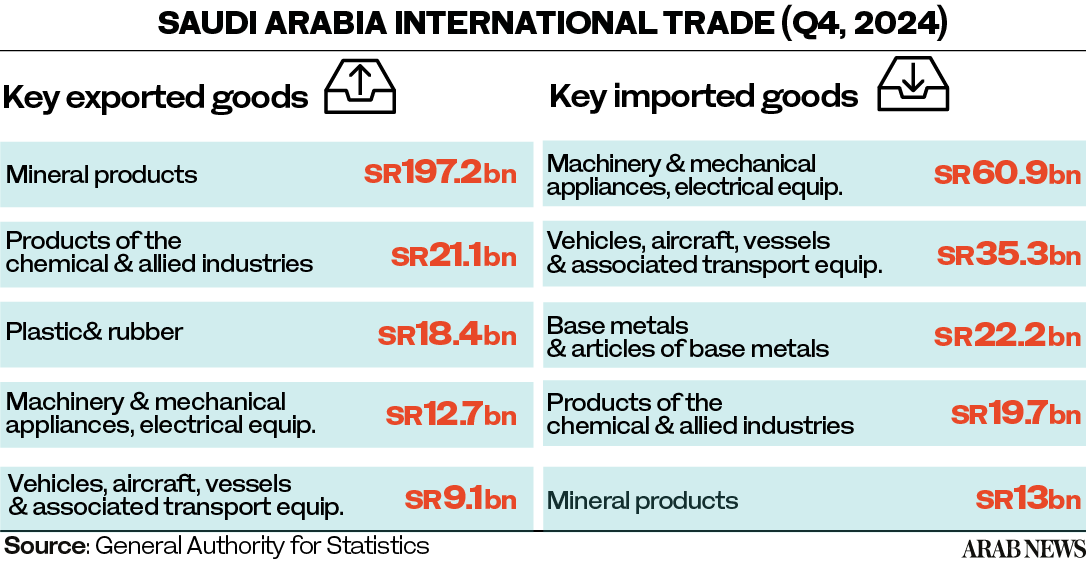RIYADH: Egypt’s banking sector recorded a 26.9 percent rise in total deposits in the 2023/2024 fiscal year compared to the previous 12-month period, official data has revealed.
The Central Agency for Public Mobilization and Statistics reported that total banking deposits reached 11.99 trillion Egyptian pounds ($237 million), reflecting increased banking activity across various economic sectors.
Egypt’s fiscal year runs from July 1 to June 30 of the following year.
This growth comes as inflation peaked at 38 percent in September 2023, prompting individuals and businesses to increase savings in banks as a hedge against currency devaluation. Attractive interest rates set by the central bank and financial inclusion initiatives under the country’s Vision 2030 initiative also contributed to deposit growth.
CAPMAS data showed that the household sector dominated Egypt’s banking deposits, with total balances reaching 7.03 trillion pounds — up 27.5 percent from the previous year.
Individual depositors accounted for 95.9 percent of household deposits, highlighting strong savings trends among Egyptian citizens. Overall, the household sector controlled 58.6 percent of total banking deposits.
The business arena also saw significant growth, with deposits rising to 1.99 trillion pounds — a 37.6 percent increase from the previous fiscal year.
Organized private sector entities held 78.7 percent of these deposits, underscoring their expanding economic footprint. Businesses’s share of total banking deposits stood at 16.6 percent.
Deposits from the public services sector reached 1.6 trillion pounds, reflecting a 5 percent annual increase.
Treasury and government administrative deposits accounted for 97.6 percent of this total, highlighting the sector’s reliance on banking institutions for financial management. The public services sector’s share of total deposits was 13.4 percent.
Credit facilities also saw robust expansion, with total balances rising to 7.21 trillion pounds in 2023/2024, marking a 50.2 percent year-on-year increase. This surge was primarily driven by strong lending to the private and public business sectors.
The private business sector received 2.22 trillion pounds in credit, a 29.2 percent annual increase. Of this, the organized private sector accounted for 1.79 trillion pounds, making up 80.9 percent of total credit allocated to private enterprises. The private sector’s share of total banking credit facilities stood at 30.7 percent.
The public business sector also saw a sharp rise in credit allocations, receiving 3.08 trillion pounds in 2023/2024 — a 105 percent increase from the prior year.
Economic authorities within this sector held 2.71 trillion pounds in credit, representing 88 percent of total public sector credit allocations. Consequently, the public sector accounted for 42.7 percent of Egypt’s total banking credit facilities.
The banking sector’s liquidity surplus grew to 4.78 trillion pounds, a 2.8 percent increase from the previous year, indicating strong financial stability. The total volume of banking credit extended reached 39.8 percent of total deposits, reflecting the sector’s robust lending activity.





























